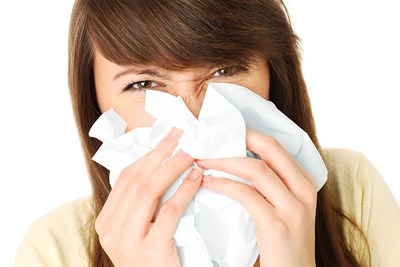A number of factors can contribute to post nasal drip. Often it’s a symptom of something else, rather than an issue on its own. Respiratory illness or allergies, swallowing disorders, foods, medications, weather, and anatomical abnormalities in the nose can all lead to mucus that is thicker or thinner than normal causing post nasal drip. Here is a look at the symptoms of post nasal drip.
What is Post Nasal Drip?
Post nasal drip is the noticeable sensation of mucus in the throat. Mucus glands in the nose, respiratory system, and sinuses constantly produce mucus to keep out dust and pathogens, provide moisture, and keep the membranes clean. The parasympathetic nervous system (a part of the autonomic nervous system that runs the automatic functions in the body, like metabolism or the gastrointestinal tract) is in charge of mucus production, so in theory you don’t realize it’s happening.
When you get sick, are dealing with a chronic sinus issue (like rhinitis), or the nose gets irritated, mucus may become thinner or thicker than normal, creating sensation when mucus is moved along. Swallowing disorders may also cause mucus to build up in the throat, accumulating or going down the wrong tubes (like the esophagus or the larynx). Essentially, post nasal drip means that you can either feel mucus constantly dripping down your throat or you can sense what feels like a lump in the back of your throat from the accumulation of mucus.
Primary Symptoms
Post nasal drip often irritates the throat. You may notice coughing, hoarseness, or persistent throat clearing in an attempt to get the mucus out. Your throat may feel sore or itchy. Additionally, there may be swelling of the tonsils and other sinus and nasal tissues that create the sensation of a knot in your throat. You may experience nasal congestion, trouble breathing, and even bad breath if you have post nasal drip.
Secondary Symptoms
Since post nasal drip is a symptom of an underlying condition, there are often other symptoms at the same time: itchy or watery eyes, sinus headaches, and an itchy nose often appear along with post nasal drip—particularly when dealing with allergies or rhinitis. Although post nasal drip isn’t really dangerous, it can be indicative that something more serious is going on. For example, post nasal drip often occurs in children with foreign objects lodged in their nose, which certainly merits attention. If you have post nasal drip and at home treatments aren’t working, talk with your doctor or an ear, nose, and throat specialist for alternative treatment methods.



